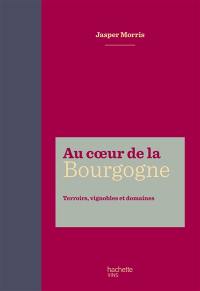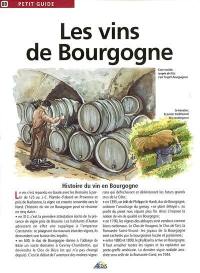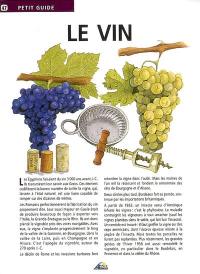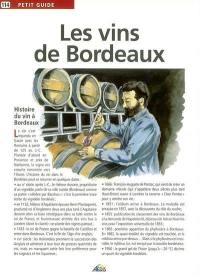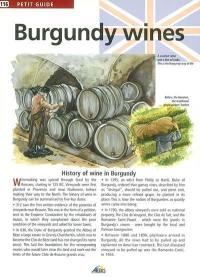
Fiche technique
Format : Broché
Nb de pages : 8 pages
Poids : 50 g
Dimensions : 2cm X 3cm
EAN : 9782842591397
French wine
Quatrième de couverture
Golden rules
· Young wine is served before older wines.
· Dry white wine is served before red.
· Sweet wine (or Port or Banyuls) must be served last...
· Light red wine (Burgunay, Beaujolais, Loire types) must be served before stronger red wines (Bordeaux, Languedoc-Roussillon, Côtes-du-Rhône).
· Red Bordeaux is served between 16 °C and 18 °C, red Bourgogne between 14 °C and 16 °C. Dry white wine and rosé are served at 10 °C or 12 °C. Champagne and sweet wines are served at between 6 °C and 8 °C.
· An old wine is never decanted.
Happy marriages
· Oysters, shellfish: dry white wine.
· Fish: grilled fish requires a dry white wine or a rosé.
Fish in sauce goes well with the wine used to make the sauce. Otherwise, a rich dry white may be served (Meursault, Montrachet, Chablis) or medium dry (Loire). With a very creamy sauce, a sweet wine may be tried.
Smoked fish only tolerates very aromatic wines (Sauvignon, Alsace).
· Foie gras: Sauternes (a classic choice) or a great white from Burgundy, or an Alsace (Riesling or Gewurtztraminer).
· Cold meats: young aromatic wines (Beaujolais, Côtes-du-Rhône, Côtes-de-Provence, Loire). Sauerkraut only likes white wine from Alsace.
· Game: goes well with quite powerful reds (Pommard, Gevrey-Chambertin, Vosne-Romanée, Chambolle-Musigny, Châteauneuf-du-Pape).
· Meat: lamb - a relatively fine red wine (Pessac-Léognan, Volnay, Beaune, Savigny).
Veal, poultry, white meat: a less light red wine (Côtes-du-Rhône) or a smooth Bordeaux (premières Côtes-de-Bordeaux, Côtes-de-Castillon). Burgundies also goes well. The essential is to avoid wines that are too powerful.
Red meat: wines with more body. Chinon, Saint-Nicolas-de-Bourgueil, Beaujolais (Morgon, Fleurie, Juliénas, Moulin-à-vent), northern Côtes-du-Rhône (Châteauneuf, Tavel, Hermitage). Pedigree Burgundies and Bordeaux (Côtes-de-Bourg, Saint-Emilion, Médoc) are perfect.
· Cheese:
Soft cheeses: (Tomme de Savoie, Port-Salut): dry whites or reds that are still young (Corbières, vintage Beaujolais).
Soft creamy cheese (reblochon type): fuller bodied whites (white Bourgogne, dry white Bordeaux) or a Burgundy, or even a light red Bordeaux.
Pressed cheeses (gruyère, comté): fruity reds or characterful whites (Arbois or a great dry Bordeaux).
Blue cheese (Roquefort, etc.): sweet white or full-bodied red.
Goat's cheese: full-bodied wines (Sauvignon, Sancerre, Pouilly Fumé, well-defined Beaujolais, Côtes-du-Rhône, Côtes-de-Provence, Côteaux du Languedoc).
Strong cheeses: white wines with plenty of body (Gewurtztraminer goes well with Munster, Sauternes with Livarot, Epoisses, Maroilles) or reds that can accompany a wide range of foods (Clos du Vougeot, Chambertin, Châteauneuf-du-Pape, Madiran).
· Desserts: chocolate goes very well with Banyuls or Rivesaltes.
Don'ts
· Vinaigrette and wine: with a salad, water, only water!
· Sweet dishes or cream sauces with red wine, bar a few exceptions.
· Wine and the freezer: never put wine in the freezer to cool it quicker.
* Translation from "Le vin à la maison" by Louis Plessis, with the kind autorisation from Flammarion, the publishers.





